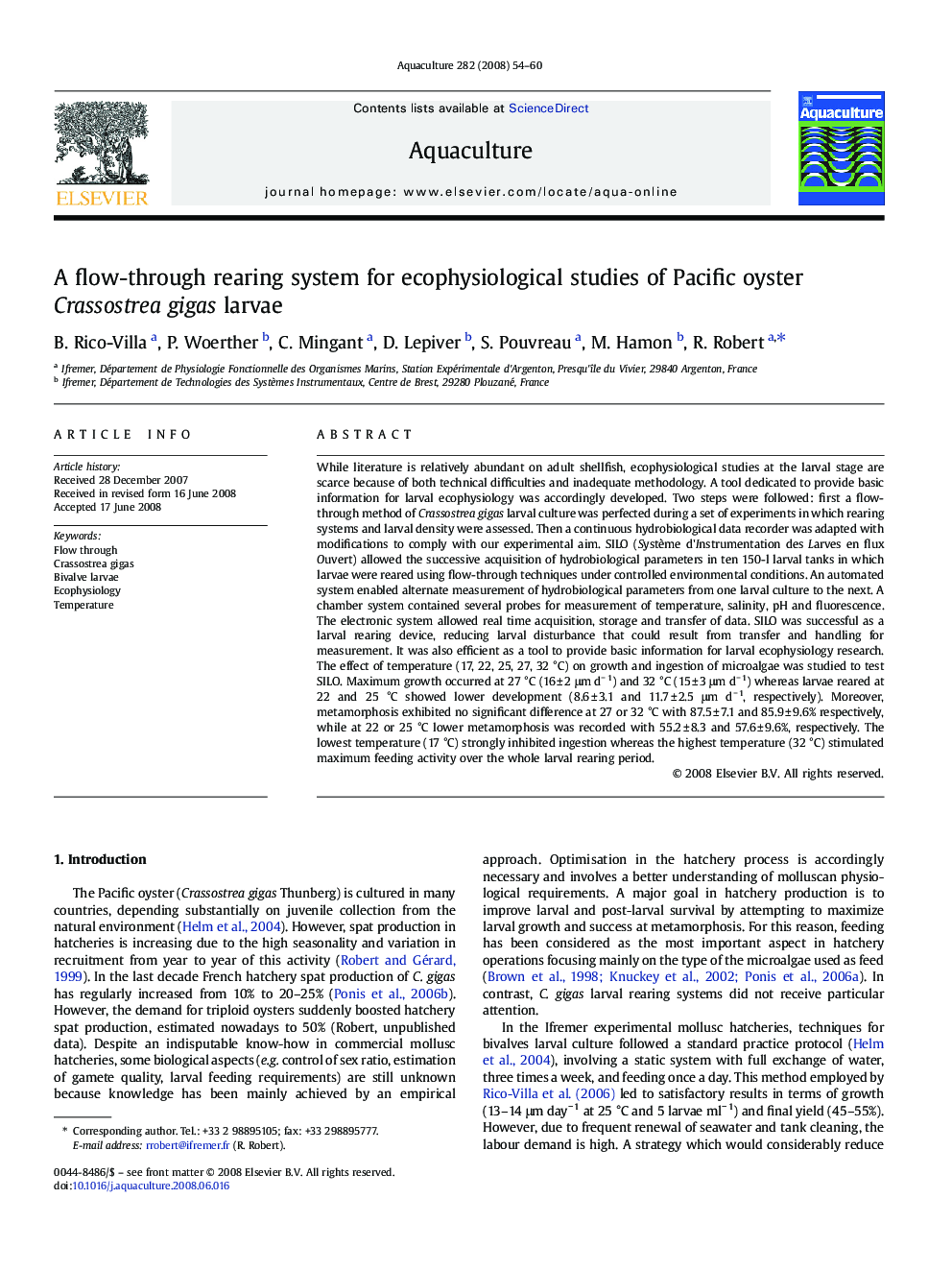| کد مقاله | کد نشریه | سال انتشار | مقاله انگلیسی | نسخه تمام متن |
|---|---|---|---|---|
| 2424564 | 1552959 | 2008 | 7 صفحه PDF | دانلود رایگان |

While literature is relatively abundant on adult shellfish, ecophysiological studies at the larval stage are scarce because of both technical difficulties and inadequate methodology. A tool dedicated to provide basic information for larval ecophysiology was accordingly developed. Two steps were followed: first a flow-through method of Crassostrea gigas larval culture was perfected during a set of experiments in which rearing systems and larval density were assessed. Then a continuous hydrobiological data recorder was adapted with modifications to comply with our experimental aim. SILO (Système d'Instrumentation des Larves en flux Ouvert) allowed the successive acquisition of hydrobiological parameters in ten 150-l larval tanks in which larvae were reared using flow-through techniques under controlled environmental conditions. An automated system enabled alternate measurement of hydrobiological parameters from one larval culture to the next. A chamber system contained several probes for measurement of temperature, salinity, pH and fluorescence. The electronic system allowed real time acquisition, storage and transfer of data. SILO was successful as a larval rearing device, reducing larval disturbance that could result from transfer and handling for measurement. It was also efficient as a tool to provide basic information for larval ecophysiology research. The effect of temperature (17, 22, 25, 27, 32 °C) on growth and ingestion of microalgae was studied to test SILO. Maximum growth occurred at 27 °C (16 ± 2 μm d− 1) and 32 °C (15 ± 3 μm d− 1) whereas larvae reared at 22 and 25 °C showed lower development (8.6 ± 3.1 and 11.7 ± 2.5 μm d− 1, respectively). Moreover, metamorphosis exhibited no significant difference at 27 or 32 °C with 87.5 ± 7.1 and 85.9 ± 9.6% respectively, while at 22 or 25 °C lower metamorphosis was recorded with 55.2 ± 8.3 and 57.6 ± 9.6%, respectively. The lowest temperature (17 °C) strongly inhibited ingestion whereas the highest temperature (32 °C) stimulated maximum feeding activity over the whole larval rearing period.
Journal: Aquaculture - Volume 282, Issues 1–4, 30 September 2008, Pages 54–60